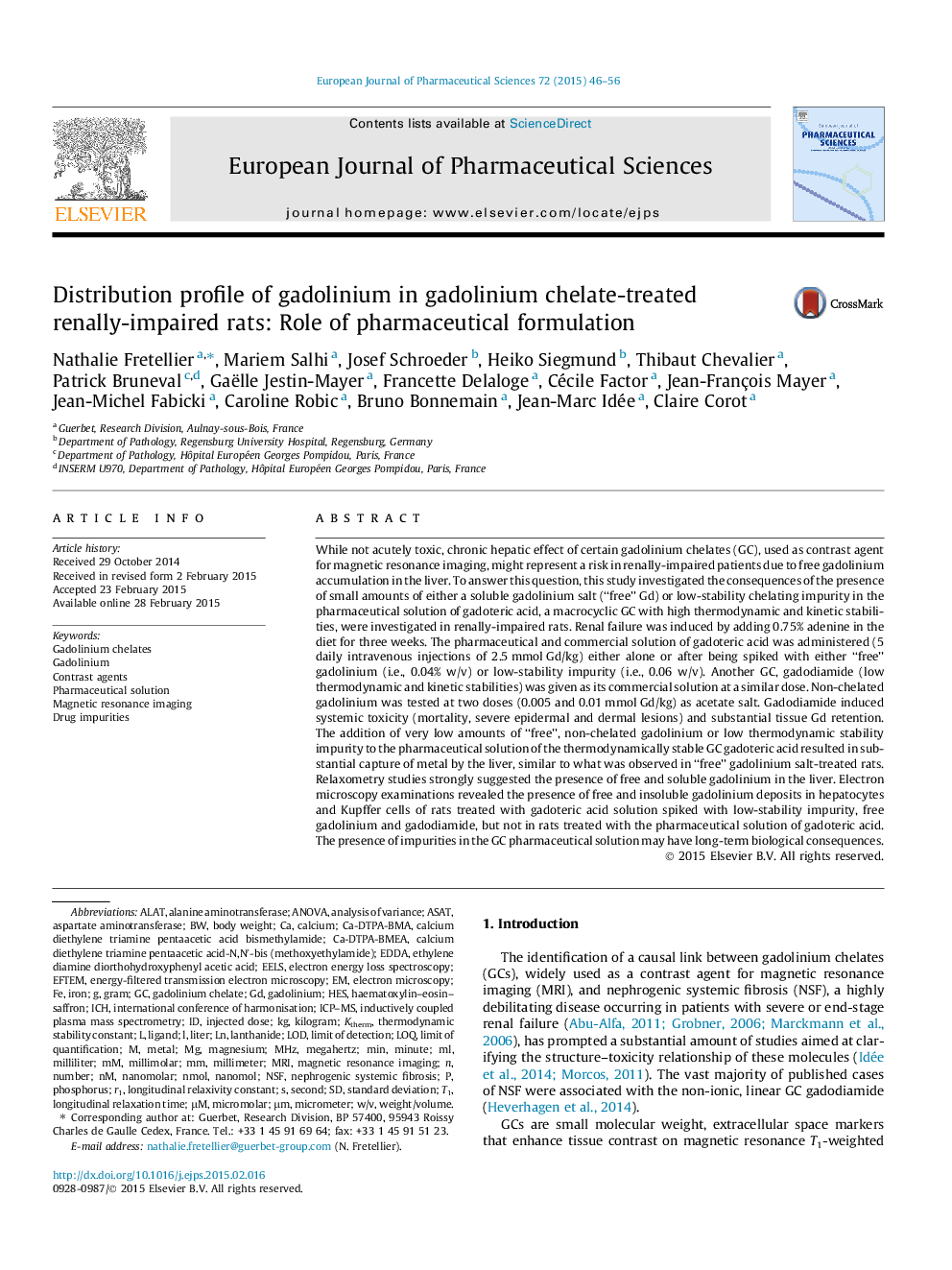| کد مقاله | کد نشریه | سال انتشار | مقاله انگلیسی | نسخه تمام متن |
|---|---|---|---|---|
| 2480224 | 1556178 | 2015 | 11 صفحه PDF | دانلود رایگان |
While not acutely toxic, chronic hepatic effect of certain gadolinium chelates (GC), used as contrast agent for magnetic resonance imaging, might represent a risk in renally-impaired patients due to free gadolinium accumulation in the liver. To answer this question, this study investigated the consequences of the presence of small amounts of either a soluble gadolinium salt (“free” Gd) or low-stability chelating impurity in the pharmaceutical solution of gadoteric acid, a macrocyclic GC with high thermodynamic and kinetic stabilities, were investigated in renally-impaired rats. Renal failure was induced by adding 0.75% adenine in the diet for three weeks. The pharmaceutical and commercial solution of gadoteric acid was administered (5 daily intravenous injections of 2.5 mmol Gd/kg) either alone or after being spiked with either “free” gadolinium (i.e., 0.04% w/v) or low-stability impurity (i.e., 0.06 w/v). Another GC, gadodiamide (low thermodynamic and kinetic stabilities) was given as its commercial solution at a similar dose. Non-chelated gadolinium was tested at two doses (0.005 and 0.01 mmol Gd/kg) as acetate salt. Gadodiamide induced systemic toxicity (mortality, severe epidermal and dermal lesions) and substantial tissue Gd retention. The addition of very low amounts of “free”, non-chelated gadolinium or low thermodynamic stability impurity to the pharmaceutical solution of the thermodynamically stable GC gadoteric acid resulted in substantial capture of metal by the liver, similar to what was observed in “free” gadolinium salt-treated rats. Relaxometry studies strongly suggested the presence of free and soluble gadolinium in the liver. Electron microscopy examinations revealed the presence of free and insoluble gadolinium deposits in hepatocytes and Kupffer cells of rats treated with gadoteric acid solution spiked with low-stability impurity, free gadolinium and gadodiamide, but not in rats treated with the pharmaceutical solution of gadoteric acid. The presence of impurities in the GC pharmaceutical solution may have long-term biological consequences.
Figure optionsDownload high-quality image (171 K)Download as PowerPoint slide
Journal: European Journal of Pharmaceutical Sciences - Volume 72, 25 May 2015, Pages 46–56
